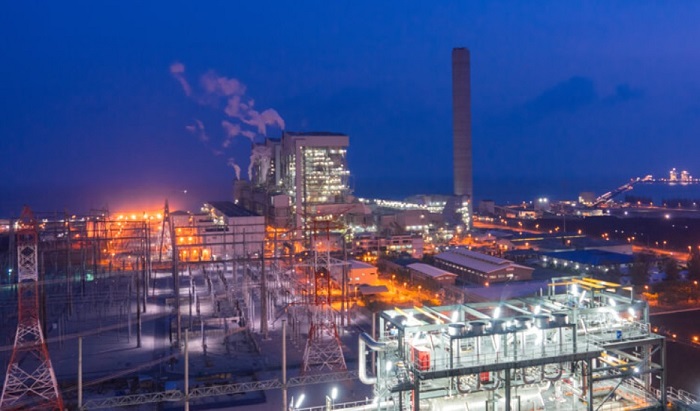Malaysia Budget 2023 – Missing the forest for the trees when it comes to sustainability
By Hardesh Singh March 4, 2023
- RM2bil for SMEs to implement low-carbon practices
- Chief greenhouse gas culprit - energy sector gets a pass

There are two major line items in the revised Budget 2023 related to supporting business transition to a green economy. First is the financing facility of up to US$447 million (RM2 billion) from Bank Negara Malaysia (BNM) to support sustainable technology startups and help SMEs implement low carbon practices. The second is an US$33.5 million (RM150 million) fund from Khazanah Nasional to spur the development of environmentally friendly projects including supporting the carbon market and reforestation.
How far will these two initiatives go toward moving the needle? It is worth diagnosing the problem before prescribing solutions.
The RM2 billion facility from BNM targets startups and SMEs. At first glance, it is easy to see why SMEs are seen as a priority. SMEs account for 97.2% of business establishments and employ 7.3 million workers while contributing 38.2% of GDP. Considering that Malaysia is aiming to achieve carbon neutrality by 2050, the government likely feels that it has no choice but to help SMEs transition given the size of its contribution to the economy.
[RM1 = US$0.223]
A further impetus to focus on SMEs is the exposure to ‘green tariffs' in the EU market. This is, in essence, a carbon tax imposed by the EU on any goods produced with high carbon emissions which are then imported into their market. A report by Standard Chartered estimates that Malaysia risks US$65.3 billion in annual export revenue if our suppliers fail to decarbonise.
While details are still lacking at this stage, we assume this facility will somewhat mirror the Low Carbon Transition Facility (LCTF) introduced by BNM in 2022 which provided a RM1 billion loan facility to ‘help SMEs embrace sustainable and low carbon practices’. The facility has been available since 3 Feb 2022 and will remain open until fully utilised and features a maximum financing rate of 5% per annum. However, then Finance Minister Tengku Zafrul was also quoted as saying that as of July 6 2022 26 companies applied for the facility, 12 were approved, and the total amount of loans granted was RM11.71 million. While not impossible, it is hard to imagine that a further RM900 plus million were approved between July and December 2022 to warrant a further RM2 billion in the 2023 budget.
Perhaps our SMEs still do not see the need to address their carbon emissions. This would be concerning given the green tariffs they risk when exporting to developed markets. Or could it be that somehow the export markets are really not that important to our SMEs as we have been led to believe? Even MATRADE, back in 2019, had stated that SMEs only contributed about 18% in export despite making up 98% of Malaysian business establishments. The Department of Statistics found exports from MSMEs in 2021 to be only 11.7% of total exports. Let's reverse the numbers to stick this point – 2% of our business establishments produce 88% of our exports, and these are not SMEs.
[Ed: Para edited for clarity.]
SMEs perhaps have little incentive to decarbonise as their focus remains domestic and asking them to pay a 5% premium to financial institutions to access funds for this purpose is probably not such an appealing prospect. In short, we might be looking (and spending) in the wrong place. Some economists might even argue that there is no effective spending by the government, as the facility is really a loan that will be disbursed by financial institutions, with interest, and therefore profit, going back to the banks.
The elephant in the greenhouse.
If we can take a step back, perhaps a simpler approach would be to ask an even simpler question. Where, exactly, are the bulk of our greenhouse gases being generated? The answer is not hard to find. Malaysia submitted its 4th Biennial update report to UN Climate Change on 31st December 2022. Let's cut to the chase: In 2019, the energy sector remained the largest contributor of emissions where it accounted for 78% of total emissions.
Without getting into too much detail, the area of interest here is related to fuel combustion activities which in turn is broken into further sub-sectors such as the Energy Industry (I.e., electricity and heat production, petroleum refining), Manufacturing and Construction (refers to the greenhouse gases produced as a result of these activities) and Transportation (I.e. Aviation, railways, etc). Our energy industries (again, related to electricity and heat production, petroleum refining, etc) accounted for 50.80% of emissions within the energy sector.
Context matters here: we know where the problem is. Our government is reporting it to the UN in its own voluntary reports, prepared and presented by the Ministry of Natural Resources, Environment and Climate Change. And yet there is nothing that addresses our energy sector in Budget 2023. A search for the term 'energy' in the Minster of Finance's speech returns only 3 instances of the word. And none of them are referring to the energy industry.
The 2023 budget features a total allocation of RM388.1 billion. Zero ringgit appears to have been allocated directly to address our energy sector. One report estimates that we will need between RM350 – RM400 billion in cumulative investments, mainly in the energy sector, representing 0.8% of the gross domestic product (GDP) every year until 2050 to meet our net-zero targets.
In light of this, a RM2 billion loan facility for SMEs won’t cut it.
Related Stories :


